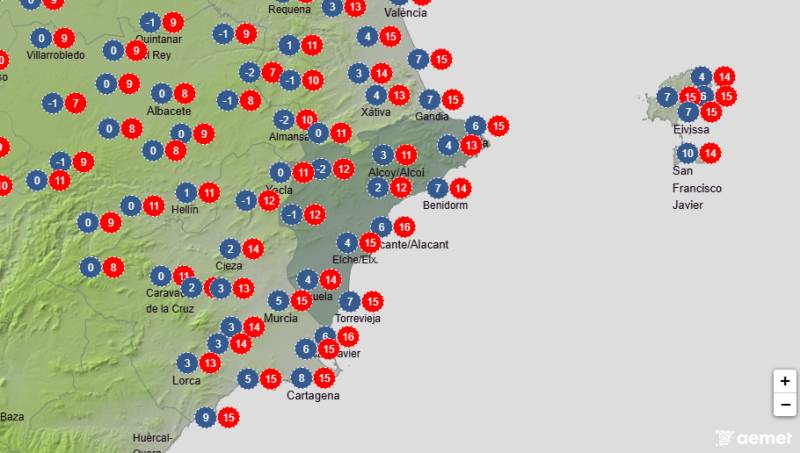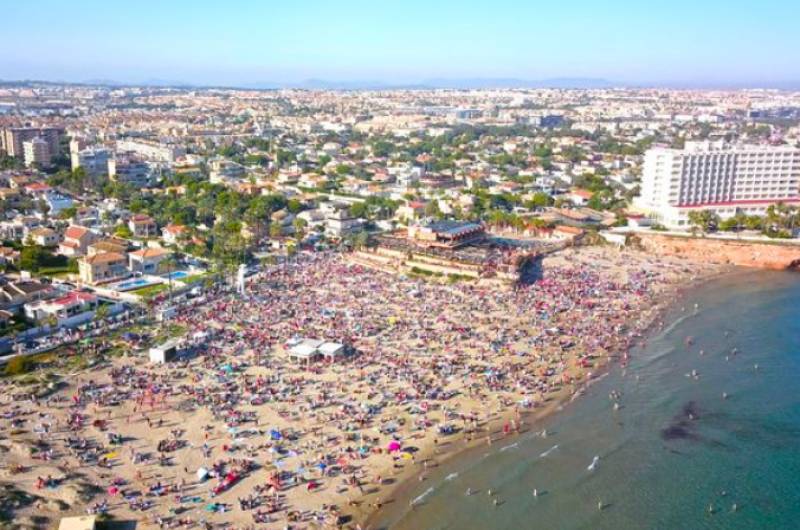

Guidelines for submitting articles to San Javier Today
Hello, and thank you for choosing sanjavier.today to publicise your organisation’s info or event.
San Javier Today is a website set up by Murcia Today specifically for residents of the urbanisation in Southwest Murcia, providing news and information on what’s happening in the local area, which is the largest English-speaking expat area in the Region of Murcia.
When submitting text to be included on San Javier Today, please abide by the following guidelines so we can upload your article as swiftly as possible:
Send an email to editor@spaintodayonline.com or contact@murciatoday.com
Attach the information in a Word Document or Google Doc
Include all relevant points, including:
Who is the organisation running the event?
Where is it happening?
When?
How much does it cost?
Is it necessary to book beforehand, or can people just show up on the day?
…but try not to exceed 300 words
Also attach a photo to illustrate your article, no more than 100kb

Orihuela castle, the Castillo de Orihuela
Now just a ruin, Orihuela castle was formerly an imposing structure which dominated the Vega Baja
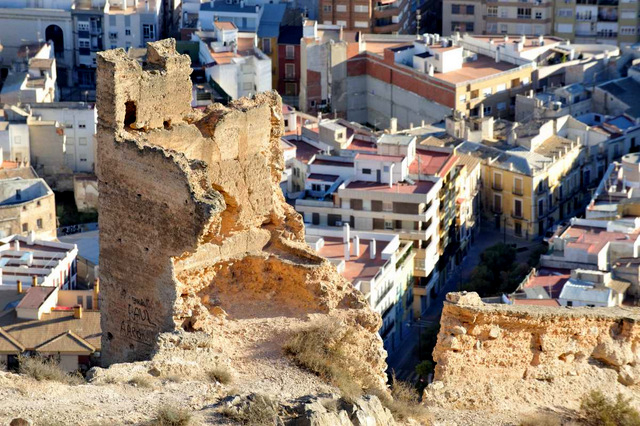 Orihuela castle is located high up on the sierra de Orihuela, in the area known as Monte de San Miguel, occupying a strategic position overlooking the city below and today is in a completely ruinous state, giving little indication of the scale of the fortifications which once existed on this rocky outcrop.
Orihuela castle is located high up on the sierra de Orihuela, in the area known as Monte de San Miguel, occupying a strategic position overlooking the city below and today is in a completely ruinous state, giving little indication of the scale of the fortifications which once existed on this rocky outcrop.
It is possible to climb up right to the top of the castle ruins, the fabulous views out across the Vega baja del Segura from this strategic outcrop the reason why this location was chosen on which to build a protective fortification, the former walls enclosing the city from the castle right down to the edge of the River Segura below.
To reach the castle, drive up to the imposing Catholic seminary which can be seen half way up the hill, then park up and follow the signage at the back of the seminary up to the ruins. The path is poorly marked and it’s easy to stray off it, but keep going up and eventually you’ll rejoin the path if this happens. It’s quite a steep climb, and good footwear is required as the route uphill is rough and requires a spot of scrambling over  boulders, so only attempt if in a reasonable state of health. However, it’s well worth the climb, if only for the views and is an excellent way to burn off a hearty lunch in the afternoon when all the monuments are closed.
boulders, so only attempt if in a reasonable state of health. However, it’s well worth the climb, if only for the views and is an excellent way to burn off a hearty lunch in the afternoon when all the monuments are closed.
The road up to the seminary is straightforward and simply a case of crossing the main bridge and straight along Calle Colón, then on upwards along the Subida al Seminario. For those who prefer more of a walk, start down by the Museum of the Reconquista, and walk up by the side of the Pozo del Cremós to join this same road, and from here, up to the castle, which is 240 metres above the main urban areas of the city.( See Moorish morning out in Orihuela).
See map: Calle Colón, Orihuela
A bit of history
There is no documentary evidence to indicate when the castle was first built, as the earliest remains of the existing structure are of Moorish origin, dating from the period between 711 and 1243 when southern Spain came under the control of Moorish rulers from Africa.
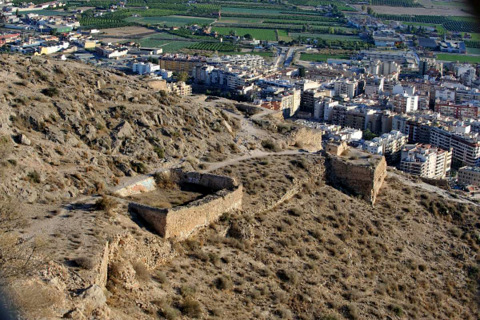 However, the Romans had a substantial presence in the area, documenting what is now Orihuela as Orcelis, and the Visigoths who invaded after the collapse of the Roman Empire ( See History of Orihuela) also had a strong presence here, naming the settlement Aurariola. It is known that a substantial fortified structure pre-dated the 711 Moorish invasion, as there is a documented account of the surrender of the Visigoth ruler who dominated this area prior to the Moorish invasion, the Pact of Tudmir.
However, the Romans had a substantial presence in the area, documenting what is now Orihuela as Orcelis, and the Visigoths who invaded after the collapse of the Roman Empire ( See History of Orihuela) also had a strong presence here, naming the settlement Aurariola. It is known that a substantial fortified structure pre-dated the 711 Moorish invasion, as there is a documented account of the surrender of the Visigoth ruler who dominated this area prior to the Moorish invasion, the Pact of Tudmir.
Visigoth society in southern Spain was not an organized kingdom as we understand it, but was fractured into small areas ruled by local overlords, in this case Teodomiro, or Tudmir.
In 711 the Moors and Berbers invaded southern Spain and quickly conquered the area almost completely. In practically no time at all, the major population centres had either been overrun or had surrendered to the armed onslaught. Although the Moors were formidable fighters they preferred to allow their opponents to surrender, because this allowed them to achieve political power in a stable community in return for allowing the natives to carry on with their way of life to a large degree.
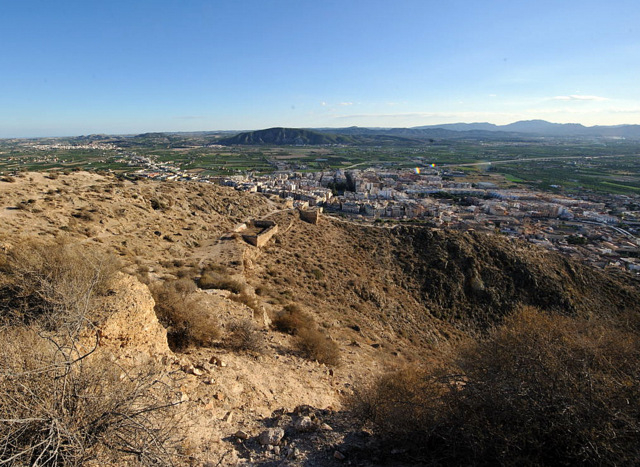 In order to force the invaders to the negotiating table local legend has it that Tudmir instructed women in the city to dress up as warriors and man the battlements, leading the Arabs to believe that the city’s defences were stronger than was actually the case. This was an inventive use of cross-dressing which was later to be repeated in the Armengola legend, concerning the ousting of the Moors 500 years later!
In order to force the invaders to the negotiating table local legend has it that Tudmir instructed women in the city to dress up as warriors and man the battlements, leading the Arabs to believe that the city’s defences were stronger than was actually the case. This was an inventive use of cross-dressing which was later to be repeated in the Armengola legend, concerning the ousting of the Moors 500 years later!
It is believed that the Pact of Tudmir was signed on 5th April 713, by Tudmir (or Theodomir/ Teodomiro )and Abd el Aziz, the son of the governor of Northern Africa, leaving Tudmir in power to continue ruling the wide swathe of territory which included the cities of Lorca, Mula, Orihuela, Alicante and Villena, but under the supervision of Abd el Aziz.
This pact lasted for two generations, until the until the area became a province of the kingdom of Al Andalús which was known as the Cora of Tudmir, and within it “Uryula” (Orihuela) was among the most important settlements: many even believe it to have been the capital of the territory, but unfortunately little documentation has survived and it has not been possible to prove or discount this notion.
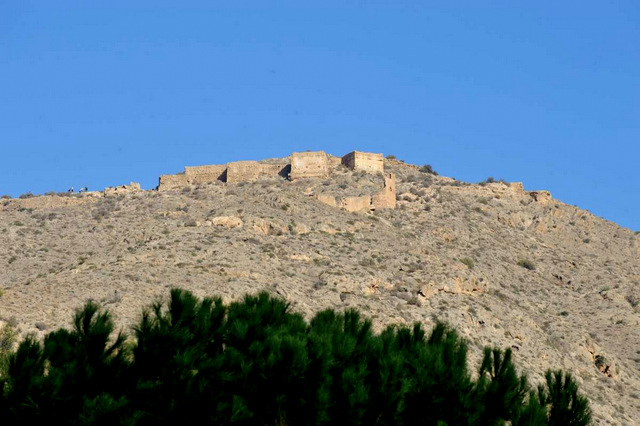 What is certain is that during this period a substantial protective fortification was erected, an alcazaba, and the castle incorporates many typical Moorish features, including a large embalse, or water storage tank and subterranean aljibe, a water storage unit. Many of the walls remaining today were constructed using Moorish building techniques, which involved creating a shuttering filled with rocks and rubble into which a liquid mixture was poured. Moorish walls are very distinctive as the peg holes can clearly be seen left by this building method. Fortifications of this nature were always surrounded by extensive walls into which the locals could herd their flocks and find shelter in times of danger, with a stronger fortification higher up at the peak of the monte.
What is certain is that during this period a substantial protective fortification was erected, an alcazaba, and the castle incorporates many typical Moorish features, including a large embalse, or water storage tank and subterranean aljibe, a water storage unit. Many of the walls remaining today were constructed using Moorish building techniques, which involved creating a shuttering filled with rocks and rubble into which a liquid mixture was poured. Moorish walls are very distinctive as the peg holes can clearly be seen left by this building method. Fortifications of this nature were always surrounded by extensive walls into which the locals could herd their flocks and find shelter in times of danger, with a stronger fortification higher up at the peak of the monte.
In the tenth century Abd-al-Rahman III al-Nasir, mentioned the castle in documentation, saying it was a “strong castle surrounded by orchards and gardens with bazaars , and a bridge across the river“.
In 1243 Orihuela passed into the hands of Prince Alfonso of Castile, son of Fernando III of Castile, as part of the Christian Reconquist of Spain, although a Moorish ( mudéjar) uprising in 1266 required the armed support of his Father-in-law, Jaime I of Aragón. Prince Alfonso later became King Alfonso X of Castile, known as “Alfonso El Sabio”, Alfonso the wise, due to his scholarship, the written laws and the literary legacy he left behind with his famous books of cantigas, or verse. His heart was interred in the Cathedral of Murcia and he began a process of reinforcing the fortifications in Orihuela which continued throughout the mediaeval period.
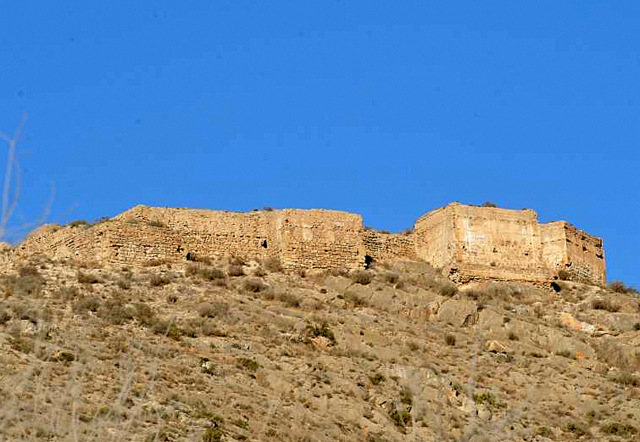 One version of the events surrounding the ousting of the Moors from local domination is that of the legend of La Armengola, the second time in Orihuela’s history that cross-dressing led to a crucial turning point in the city’s history.
One version of the events surrounding the ousting of the Moors from local domination is that of the legend of La Armengola, the second time in Orihuela’s history that cross-dressing led to a crucial turning point in the city’s history.
This time, though, it was men dressed in women’s clothing who played the key role in changing the future of their city. This story is played out every year in the annual moors and Christians Fiestas of the Reconquist in Orihuela which centre around the date of 17th July, the date on which Alfonso first took the city.
There is evidence that the castle was a strong and important fortification throughout this period, as it was attacked during what is known as the “War of the two Pedro’s” between the kings of Castile and Aragón in the second half of the 14th century. Pedro I (“The Cruel”) of Castile unsuccessfully attacked the castle in 1364, although he gained revenge and stormed it two years later. ( Apparently lack of food forced the surrender, those inside having been forced to resort to cannibalism to survive).This success was short-lived, though, and Pedro IV (“The Ceremonious”) of Aragón re-took it not long afterwards. It was as a result of the support given to him by the people of the city that Pedro IV awarded Orihuela its motto, “Semper ensis vester prevaluit” (Your blade always prevailed).
Pedro incorporated Orihuela into the territory of Valencia, maintaining its status as a frontier territory in relation to its near neighbours in Murcia (which belonged to the kingdom of Castile) and bordered with 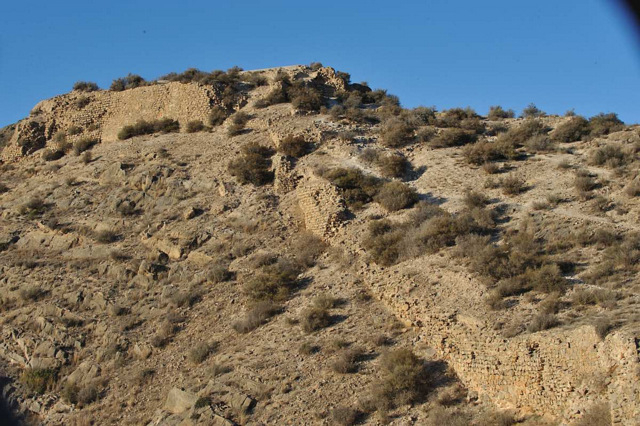 Granada (the only Kingdom still under Arabic rule), increasing the status of the town and the castle and due to its strategic importance Orihuela was finally declared a city on 11th September 1437. During this period Orihuela boomed, with religious orders building just some of the imposing and important monuments which still survive today.
Granada (the only Kingdom still under Arabic rule), increasing the status of the town and the castle and due to its strategic importance Orihuela was finally declared a city on 11th September 1437. During this period Orihuela boomed, with religious orders building just some of the imposing and important monuments which still survive today.
The last important act of the Middle Ages in Orihuela occurred in 1488, when the Catholic monarchs held court in the Iglesia de Monserrate prior to their campaign to complete the Reconquista by taking the city of Granada, the castle at its full splendour as a strategic fortification at this point.
In 1521 Orihuela was sacked after the city’s population rose up against Carlos I in 1518, the battle of Bonanza ensuring the city was severely punished for its disloyalty. From this point on, its strategic importance declined and the structure of the castle started to suffer.
In the Wars of Spanish Succession at the start of the eighteenth century the city’s governor, the Marqués de Rafal, threw in his lot with Charles of Austria, ensuring that Orihuela ended up on the losing side. When his opponent Felipe of Borbón triumphed the city was sacked again and lost its privileges.
During the conflict the castle was struck by lightning and the gunpowder stored inside exploded, not only killing the unfortunate soldiers garrisoned in the castle, but also completely obliterating the main structure of the castle itself.
In March 1829 the “Torrevieja earthquake” caused severe damage in the town and the last remains of the castle were destroyed, along with many important buildings in the whole of the Vega baja.
Since then, it has continued to crumble, and little remains today other than a few scraps of the walls and bases of the towers.
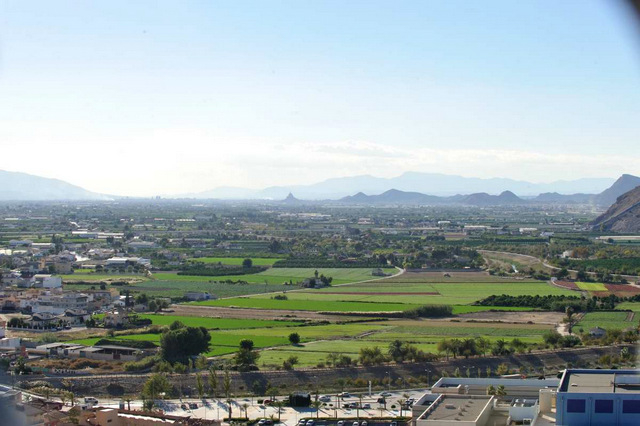 Although the castle is classified as a protected site, little has been done to conserve it and nothing to make it more accessible for visitors. Those climbing up to the ruins today can follow part of the original pathway up the hill, formed by stones laid in a pathway, smoothed by the passage of feet, hooves and the elements during the 1300 years since the structure was first constructed. Although successive local governments have promised to undertake consolidation works, nothing has been done, the castle left to the elements and the whims of vandals, who have found parts of it a striking canvas on which to daub their “artworks.”
Although the castle is classified as a protected site, little has been done to conserve it and nothing to make it more accessible for visitors. Those climbing up to the ruins today can follow part of the original pathway up the hill, formed by stones laid in a pathway, smoothed by the passage of feet, hooves and the elements during the 1300 years since the structure was first constructed. Although successive local governments have promised to undertake consolidation works, nothing has been done, the castle left to the elements and the whims of vandals, who have found parts of it a striking canvas on which to daub their “artworks.”
However, it’s well worth the climb just to see the views and understand why Orihuela was such a strategically important location throughout its history, dominating the Vega baja, the River Segura and the vital communications route between Murcia, which in turn lead to Granada, and the trading routes leading on along the Mediterranean coastline and into the rest of Europe.

















